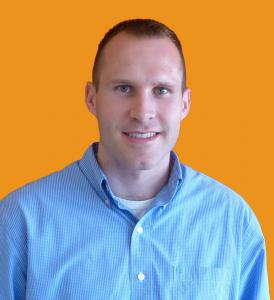Co-founder and CEO, Perry Edwards, Ph.D. of Croptix on Enabling Farmers to Detect and Monitor Plant Health
CEOCFO and Croptix Co-founder and CEO, Perry Edwards, Ph.D. discuss their Technology for Sensing Nutrition and Disease in the Field
STATE COLLEGE, PENNSYLVANIA, UNITED STATES, July 10, 2023/EINPresswire.com/ -- CEOCFO Magazine, an independent business and investor publication that highlights important technologies and companies, today announced an interview with Perry Edwards, Ph.D., Co-founder and CEO of State College, Pennsylvania-based Croptix, providing technology and services for monitoring plant health in the field; diagnosing nutrition and disease.
To read the full interview visit:
https://www.ceocfointerviews.com/croptix23.html
During the interview with CEOCFO’s Senior Editor Lynn Fosse, addressing the idea behind Croptix, Dr. Edwards said, “Croptix was formed to bring a transformative solution to farmers to detect and monitor plant health. Croptix is based on an innovative approach to sensing nutrition and diseases in the field. We do this by translating sophisticated laboratory technology – specifically spectrophotometry - miniaturizing it and making it accessible to farmers.”
Describing their approach, Dr. Edwards said, “Our approach is brand new. Some products were created to do different parts of what we do. For example, there are sensors that can assess the green color of crops and correlate that with nitrogen concentration. We bring more sophisticated technology to the market with broad applications to detect different nutritional aspects of the crop as well as to assess disease.”
Dr. Edwards continued, “Today, the common approach is for farmers to collect leaf samples from their crops, mail the samples off to a lab, and then get back an analysis of nutrition. The problem with this approach is that it is cumbersome and slow. Getting the results back from the lab takes a long time. By the time the farmer gets the results, it’s either too late to act or they’ve missed an optimal window to improve the health of their crops. Croptix’s solution enables farmers to monitor crop health in almost real time, allowing them to take proactive steps to improve productivity and output.”
On the reason they started with citrus crops, Dr. Edwards shared, “Croptix was founded on technology developed at and spun out of Penn State University. My co-founder, Dr. Zhiwen Liu, and I were experts at getting grant funding support for new research. We were successful in receiving a National Science Foundation SBIR grant to develop our technology for a host of applications such as nutrition assessments, disease assessments, and drought detection in crops. That was key to developing the technology and demonstrating early feasibility. To bring our first product to market, as CEO I knew that it was essential to address a critical need and to keep the company focused. That need turned out to be the detection of a disease that was decimating citrus crops: HLB or citrus greening disease.”
Explaining their technology and services, Dr. Edwards told Lynn, “Someone carries the Croptix sensor unit to the vicinity of the crop, whether it’s a field, a grove, an orchard, or a vineyard. For example, for citrus HLB detection, you would take the unit to an orange tree and collect a representative number of leaves from the tree. Those are the samples that you are going to put into the device to do the measurements on the spot.”
Dr. Edwards goes on to further explain, “The device operates with a smartphone app connected to the sensor. There is a leaf clip, like a lever, that opens, and you insert the leaves one at a time. You press the button to do the measurement, and it takes just a few seconds to do the measurement on each leaf. To assess a citrus tree for HLB, we recommend taking about eight to ten leaves. So, you can sample a tree in about 1 minute. You then move on to the next tree. This is a huge improvement over pulling leaves and mailing them to a lab.”
As for how their service works for the grower, Dr. Edwards offered, “It is fully turn-key for the growers. They sign up for the service and schedule. When it gets time to do the assessment the service provider goes out and does the work. The results are analyzed and sent to the grower shortly after that. The growers typically do not need to purchase the device. However, larger growers with in-house labs have expressed interest in owning the sensors, and we are open to this collaboration.”
Asked what they have learned over the past few years, Dr. Edwards said, “We have learned two key things over the last few years: the importance of our technical platform and the importance of our growing proprietary data. With the platform that we have today, we now have the ability to access and perform lots of measurements in many locations with a variety of crops. Our vast and growing amounts of data enable us to train our systems effectively and quickly for other applications, such as nutritional assessment. I have come to realize that harvesting lots of data and being able to quickly capture that data provides a very powerful advantage for us that we will be leveraging going forward as we broaden our platform.”
For more information:
Lynn Fosse, Senior Editor
CEOCFO Magazine
+1 352-431-3400
lf@ceocfomail.com
Legal Disclaimer:
EIN Presswire provides this news content "as is" without warranty of any kind. We do not accept any responsibility or liability for the accuracy, content, images, videos, licenses, completeness, legality, or reliability of the information contained in this article. If you have any complaints or copyright issues related to this article, kindly contact the author above.



